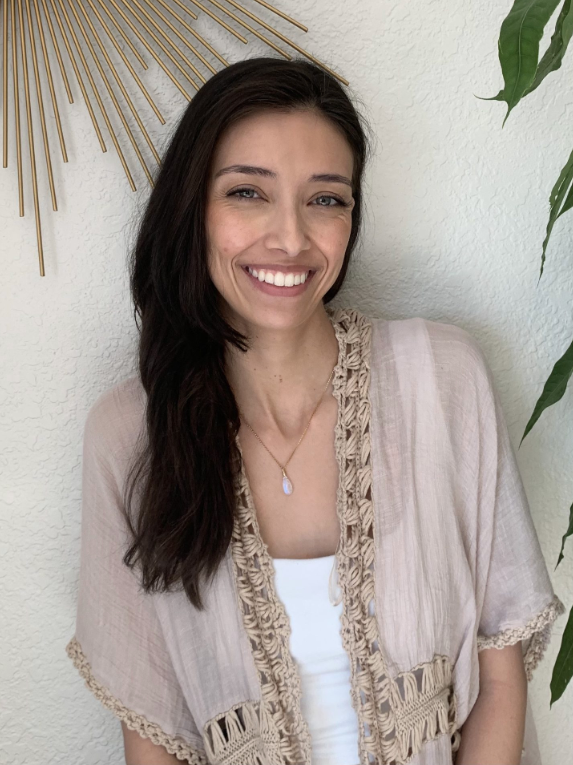Understanding EMDR Therapy: Standard, Intensive, and Adjunct Options
EMDR therapy can take many forms, each designed to meet people where they are in their healing process.
Whether through standard weekly sessions, focused intensives, or adjunct EMDR alongside another therapist, each approach offers a different rhythm and depth of support. Understanding these options can help clarify what might best fit your needs and create the space for meaningful, lasting change.
Table of Contents
EMDR Treatment Options
EMDR therapy isn’t one-size-fits-all. The structure and pacing can be adjusted to meet each person’s unique needs, goals, and readiness for the work. Some people find a steady rhythm of weekly sessions most supportive, while others benefit from longer or more focused time for deeper processing.
Each format—standard, intensive, and adjunct EMDR—offers a different way to engage in the healing process. What stays consistent is the focus on collaboration, safety, and honoring the pace that feels right for you. The sections below describe each approach in more detail and how they can support different stages of healing.
What Is Standard EMDR?
Standard EMDR refers to when EMDR is integrated into a 50-minute therapy session. I often weave it into ongoing therapy or use it within adjunct EMDR work when someone needs extra support with a specific memory, emotion, or belief. EMDR can be adapted to different session lengths, but when it’s part of the standard therapy hour, it offers a familiar rhythm for processing and integration.
During these sessions, I use bilateral stimulation—such as eye movements, tapping, or sound tones—to help the brain safely reprocess distressing experiences. This process supports the nervous system in releasing what’s been held, so those memories or sensations lose the intensity they once carried.
Many people find this format helpful because it provides both structure and space. There’s time to stay connected to the work, and time between sessions to reflect, rest, and let the shifts settle into everyday life.
What Is Intensive EMDR?
Intensive EMDR offers a focused and spacious format for healing. These sessions are generally two hours long, giving more room to stay with the work without feeling rushed or interrupted. They can be scheduled close together to build momentum or spaced out to allow time for integration in between. While intensives are often used to process trauma, they can also help shift patterns, sensations, or nervous system responses that haven’t eased through traditional therapy. The extended time allows for deeper reprocessing, a stronger sense of completion, and fewer disruptions in the natural flow of the session.
EMDR is never something that’s done to someone—it’s used with intention and only when the client feels ready. I check in often throughout the process, and EMDR is introduced only when it feels right for the person in front of me. That sense of collaboration helps clients stay in control and actively involved in their own healing. For many people, weekly EMDR therapy feels steady and supportive. But sometimes, the 50-minute hour can feel too short—just as something meaningful begins to unfold, the session ends. Intensive EMDR can be especially helpful when things feel stuck, when life circumstances make weekly therapy difficult to maintain, or when there’s a readiness to move through something more directly.
The EMDR process itself doesn’t change; what shifts is simply the amount of time dedicated to it. Some people prefer the rhythm of shorter, weekly sessions, while others find that longer sessions help them stay connected to the work in a deeper, more continuous way. It’s not about which is better, but about what feels most supportive for where you are right now. Intensive EMDR can stand on its own or be paired with ongoing therapy. For those already working with another therapist, I offer intensives as supplemental care—designed to support, not replace, the healing that’s already taking place.
How Adjunct EMDR Fits In
Adjunct EMDR is a collaborative way to add focused trauma work to therapy that’s already in progress. It doesn’t replace your primary therapist or the relationship you’ve built—it simply offers extra support for something specific that hasn’t fully shifted through talk therapy alone. In this model, I work alongside your current therapist to help process a particular memory, emotion, or body-based pattern that continues to feel stuck. It’s often a short-term, goal-oriented process designed to help you move through what’s been hardest to release so you can return to your ongoing work with more ease and momentum.
Adjunct EMDR can be helpful when:
Your therapist isn’t currently offering EMDR and recommends working with a specialist for part of your process
You’ve made progress in therapy but still feel stuck in certain symptoms, beliefs, or body responses
You’re looking for focused support around a specific trauma or recurring emotional pattern
These sessions can be scheduled as 50 minutes (standard EMDR) or 2 hours (intensive EMDR), depending on what feels most supportive. EMDR is always used intentionally and collaboratively—introduced only when you feel ready and in control of the process.
The goal of adjunct EMDR isn’t to take over your care but to strengthen it. Your therapist remains the anchor of your journey, and I focus on the clearly defined target that’s been holding you back—whether that’s a distressing memory, belief, or nervous system response. Once that piece feels more resolved, you return to your ongoing therapy with greater clarity, regulation, and movement.
It’s a team approach:
Your EMDR therapist helps process what’s stuck through focused EMDR work.
Your primary therapist helps integrate those shifts into the broader context of your healing.
This way, you receive specialized trauma processing while maintaining the trust and continuity that already exist in your therapy. Adjunct EMDR doesn’t compete with your work—it complements and enhances it, helping you feel more open, grounded, and connected as you continue forward.
Signs EMDR Might Be Helpful
There isn’t a perfect formula for knowing when EMDR is the right next step, but there are times when it can make a meaningful difference. Often, people consider EMDR when they’ve already done important work in therapy but still feel something hasn’t fully released.
You might notice that:
Progress feels stalled, even after putting in effort and insight in therapy
Talk therapy has helped you understand the “why,” but your body still reacts as if the danger hasn’t passed
Physical symptoms like tension, panic, or nervous system activation continue to show up
EMDR isn’t currently available in your therapy, or there isn’t enough time to fit it in
You’re curious about EMDR and wondering how it could support your healing
Adjunct and intensive EMDR don’t replace the therapy you already have—they add another layer of support. Think of them as focused opportunities to move through what’s been hardest to shift, so your ongoing work can feel lighter, more open, and more effective.
What to Expect in a Session
When someone decides to move forward with adjunct EMDR—whether in a standard 50-minute or intensive 2-hour format—the first step is an intake session. This meeting gives me a chance to learn more about your history, your goals, and what feels most important to focus on. Together, we’ll create a plan for reprocessing that feels safe, structured, and responsive to your needs.
During the intake, we’ll talk about what brings you in, explore how EMDR works, identify the grounding strategies that help you feel supported, and begin to outline which memories, patterns, or responses might become the focus of our work. After that, sessions move at your pace. Some people notice changes after just a few meetings, while others stay with the process longer until certain themes feel more resolved.
You’ll always have choice in how often we meet—whether you prefer the steadiness of weekly sessions or the deeper focus of intensive work. The process is flexible and collaborative, designed to support both your healing and any ongoing therapy you’re already engaged in. My role is to guide the EMDR process while helping you stay connected, grounded, and in control of your experience every step of the way.
Final Thoughts
My approach to EMDR is rooted in safety, collaboration, and respect for each person’s pace. Healing isn’t something that can be rushed, and EMDR offers a way to meet what’s been held—gently, at the right time, and in the right way. Whether through standard, intensive, or adjunct EMDR, I tailor each experience to support the unique rhythm and needs of the person sitting across from me.
If you’re curious about how EMDR might help you move through what feels stuck, I’d love to connect. I offer EMDR therapy in person in Redondo Beach and online throughout California, and I’m happy to answer any questions about what the process might look like for you.
Until next time, don’t forget to take care of yourself.
About the Author
I’m Catherine Alvarado, LMFT #134744 — a Licensed Therapist, Clinical Supervisor, EMDR Certified Therapist, and Consultant-in-Training based in Redondo Beach, California. My work centers on helping people reconnect with themselves through mind–body approaches that address what the nervous system has been holding. I work with teens, adults, and families navigating anxiety, panic, trauma, and the lingering effects of stress.
As the founder of Catherine Alvarado, LMFT & Associates and co-founder of Eunoia Wellness Studio, I bring together evidence-based therapy and a deeply relational approach. My practice offers individual therapy, EMDR intensives, adjunct EMDR, couples therapy, and family therapy—both in person in Redondo Beach and online throughout California.
My work is guided by compassion, curiosity, and a belief that healing becomes possible when we feel safe enough to explore our inner world. If you’d like to learn more or schedule a free phone consultation, you can reach out through the contact page.






